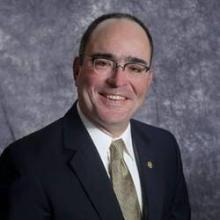WASHINGTON – Family medicine has gone from the brink of collapse to a rising specialty, American Academy of Family Physicians Board Chair Jeffrey Cain said Oct. 20 in a speech capping his service on the academy leadership team.
Dr. Cain noted that he began his run as an AAFP officer in 2007, a time when the “impending collapse” description had been bestowed upon family medicine by the Institute of Medicine. “For family medicine, it really was a time of crisis,” he said at the annual Congress of Delegates of the American Academy of Family Physicians.
Payments were low, there was little student interest in the specialty, and some 47 million Americans were uninsured, he said.
“We’ve actually stopped that free fall of [family medicine] and we are now rising,” said Dr. Cain, who completes his term as board chair at the meeting.
Six years ago, insurers, payers, and employers did not see the value of primary care, but now, the adoption of the patient-centered medical home “has proven in the real world that we are the key to the triple aim” of increasing access, increasing quality, and reducing cost, Dr. Cain said.
Medicare is also paying for value, in part through grants from the Center for Medicare and Medicaid Innovation, he said.
Even President Obama has spoken publicly “about the need to make family medicine the hub of patient-centered care,” Dr. Cain said. “We have not arrived, but we’re on our way.”
In 2007, family medicine had the lowest match rate ever recorded, but the number of matches has increased each year for the past 5 years. There are now 26,000 student members of the AAFP today – one in four U.S. medical students, Dr. Cain said.
Access to primary care has increased as well, he said. Six years ago, there were some 47 million uninsured Americans. The push for the Affordable Care Act “unleashed a political firestorm,” nationally and within the AAFP membership, Dr. Cain said.
The uninsured rate has dropped from 18% to about 13% currently, he said.
“Today I stand before you a witness to what I see as the rebirth of family medicine,” Dr. Cain said.
On Twitter @aliciaault


